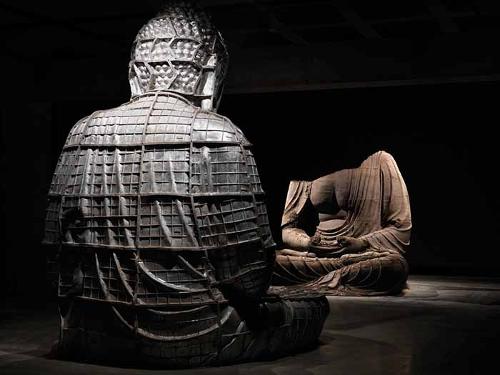.jpg)
Claire Roberts' Photography and China is one of the newest volumes in the Exposures series on photography, edited by Mark Haworth-Booth and Peter Hamilton for Reaktion Books. This is an impressive series with great scholars tackling photography-focused themes in well-designed and insightfully illustrated volumes that come in at 200 pages for under $30. Perhaps there is a certain imperial history tendency in the overall project, with its themes and foci determined by a nineteenth century structure of knowledge. But the series inaugurates a welcome shift in approaching each theme by reversing the usual subordination of photography to anthropology, archeology, science etc. – bearing in mind the impact of photography on knowledge since the nineteenth century.
The history of Asian photography is slowly moving beyond the connoisseurial focus of specialist collectors, within which Orientalism has tended to predominate, with a high proportion of the surviving images accessible in collections having been taken by Western photographers. This volume begins to shift the focus and point of view and it is especially refreshing to find that around two-thirds of the sources that inform the book’s account are by Chinese authors and almost half are Chinese language sources. To attempt a history of photography in China, balancing the historical accounts of nineteenth and early twentieth century photography, debates on realism and propaganda in the twentieth century, both before and after 1949, the traumas of the Cultural Revolution and the emergence of China as a world force in global politics and economics as well as in contemporary art is a tall order indeed.
China’s history in the 170 years since the invention of photography has involved an acceleration of time in an unprecedented social transformation that has certainly changed the world in ways that could not have been imagined in the 1840s. The first daguerreotype in China was made in a moment of weakness and defeat – to document the signing of the Treaty of Whampoa in 1844 (giving to the French the same trading rights granted to the British in the 1842 Treaty of Nanking) and the very memory of defeat and humiliation now fires China to produce different sorts of images, of success and triumph.
For scholars of photography, this volume is especially productive in its introduction of the different ways in which the concept of photography is rendered in Chinese, illuminating the meaning of photography more generally: "writing the truth" (xiezhen), ‘”small portrait” (xiaozhao), “to take a likeness” (zhaoxiang), “shadow image” (yingxiang) and “to capture a shadow image” (sheying). All these meanings reflect both Western notions of truth, appearance and the essence of things (in the Platonic tradition), as well as Chinese philosophical concepts of the nature of “true existence.”
One of the richest aspects of the book is the way that the author links the development of photography in China with broader aspects of visual culture, in painting and printing, through the example of The True Record, an illustrated magazine, published in the first years of the Republic (1912–13). This is helped by the very fine visual analysis Roberts provides of particular images, and astutely placed details of twentieth-century Chinese history.
We gain a precisely nuanced picture of technological influences in China through the identification of particular cameras and lenses used, indicating circuits of influence – the Soviet Kiev, widely used in China before the Sino-Soviet split, the Chinese Seagull, produced in the period of the Great Leap Forward, the Mamiya, the Hasselblad, (which probably became known in China via the use of a medium format Kiev, a direct clone of the Hasselblad, sometimes known as the "Hasselbladski".
Remarkable images are chosen, some of which may be familiar to scholars of Chinese photographers while others are the result of the author’s original research in the most important archives of the world – attesting to the thoroughness of the research here. An image by Yang Fudong, for example graced the cover of Artlink in 2003. Much more recent work has been done on contemporary Chinese photography, as Chinese artists and photographers take up the camera, in order to “take control of their image life” (as Jia Zhangke once put it). This volume gives us a general historical context for the emergence of this work.
Photography and China is an excellent addition to the Exposures series and one that provides an overview as significant as Helmut Gernsheim’s 1955 Concise History of Photography provided for the history of photography in general. But even more: there is a fine balance here between history, aesthetics and technology that suggests a model for future research on the image in general.












